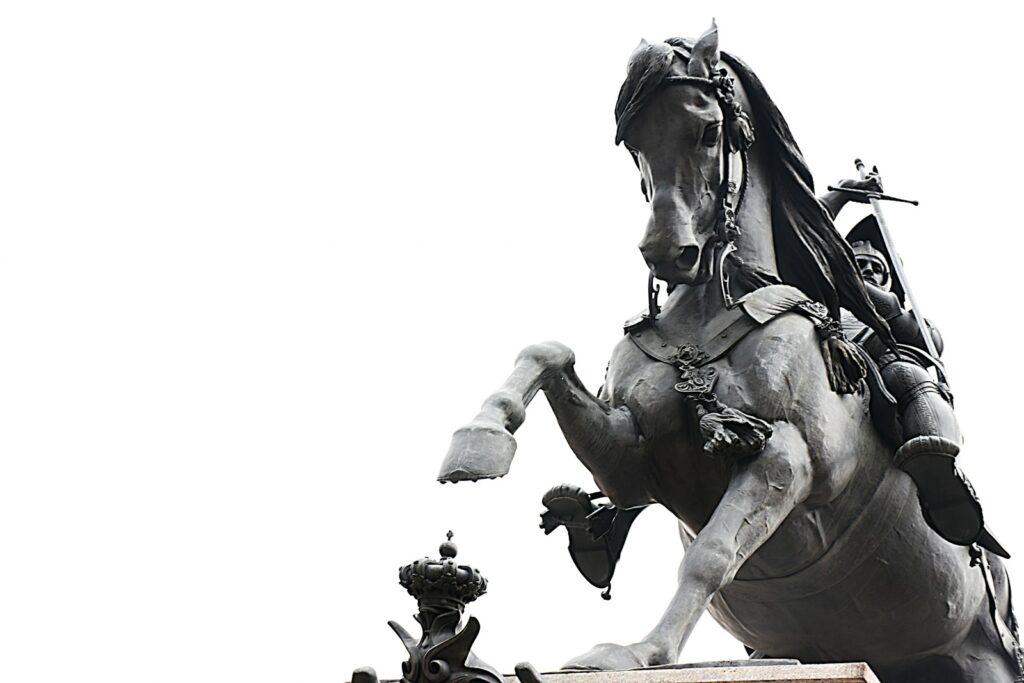Throughout history, behind many of mankind’s greatest military leaders stood their faithful, powerful companions – war horses that carried them to victory and sometimes, to their demise. These magnificent animals were not merely modes of transportation but strategic military assets, loyal partners, and often, symbols of power that inspired armies and struck fear into enemies. From ancient battlefields to medieval conquests, certain horses have transcended their role as mere steeds to become legends in their own right, immortalized alongside the great kings and generals they carried. Their stories of courage, endurance, and partnership with their famous riders offer fascinating insights into how these remarkable animals shaped the course of human history.
Bucephalus: Alexander the Great’s Legendary Companion

Perhaps the most famous war horse in history, Bucephalus was the beloved mount of Alexander the Great and carried the conqueror through numerous battles during his vast campaign across Asia. According to legend, a 12-year-old Alexander was the only person who could tame the horse when it was presented to his father, King Philip II of Macedon—having noticed that the animal was afraid of its own shadow. Bucephalus served Alexander for nearly 20 years, carrying him approximately 20,000 miles through deserts, mountains, and battlefields, from Greece to India. When the horse died in 326 BCE after the Battle of the Hydaspes in what is now Pakistan, Alexander named the city Bucephala in his honor—a testament to the deep bond between the world’s greatest conqueror and his faithful steed.
Marengo: Napoleon Bonaparte’s Trusted Arabian

The small grey Arabian stallion named Marengo carried Napoleon Bonaparte through numerous European campaigns and reportedly survived eight wounds in battle. Standing at just 14.1 hands high (about 57 inches), Marengo was captured from Egyptian stock in 1799 during the Egyptian campaign and went on to carry the French emperor in major battles, including Austerlitz, Jena-Auerstedt, Wagram, and—most famously—Waterloo. After Napoleon’s defeat at Waterloo in 1815, British forces captured Marengo, who lived out his remaining years in England until his death at the impressive age of 38. Today, Marengo’s skeleton (minus one hoof, which was turned into a snuff box) is displayed at the National Army Museum in London, while the famous painting Napoleon Crossing the Alps by Jacques-Louis David immortalizes the emperor atop his small but mighty war horse.
Chetak: The Legendary Mount of Maharana Pratap
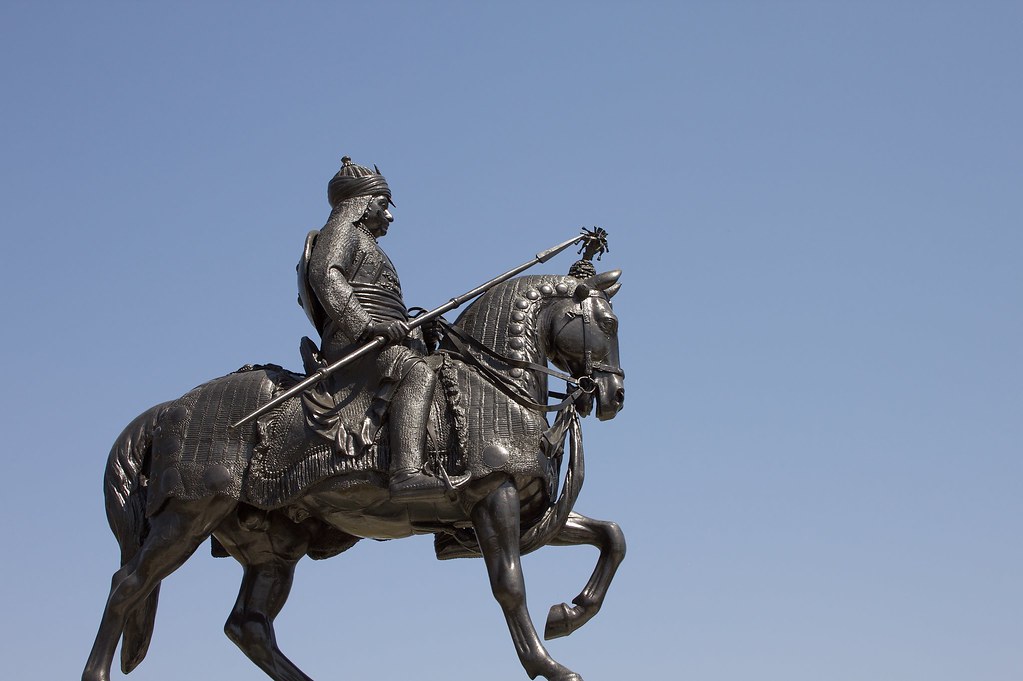
In Indian history, few horses are as revered as Chetak, the faithful blue-tinged stallion who served the 16th-century Rajput ruler Maharana Pratap. Chetak’s greatest moment came during the 1576 Battle of Haldighati against the Mughal forces of Emperor Akbar, where he displayed extraordinary courage and loyalty. Despite sustaining a fatal injury when his leg was severed by an elephant’s sword during the battle, Chetak managed to carry his wounded master safely away from the battlefield before finally collapsing. According to legend, the horse leaped across a stream despite his grievous injuries, saving Maharana Pratap from certain capture before dying at his master’s feet. Modern India honors Chetak’s sacrifice with numerous statues, and his name has become synonymous with loyalty and devotion in Indian culture.
Copenhagen: The Duke of Wellington’s Resilient Charger
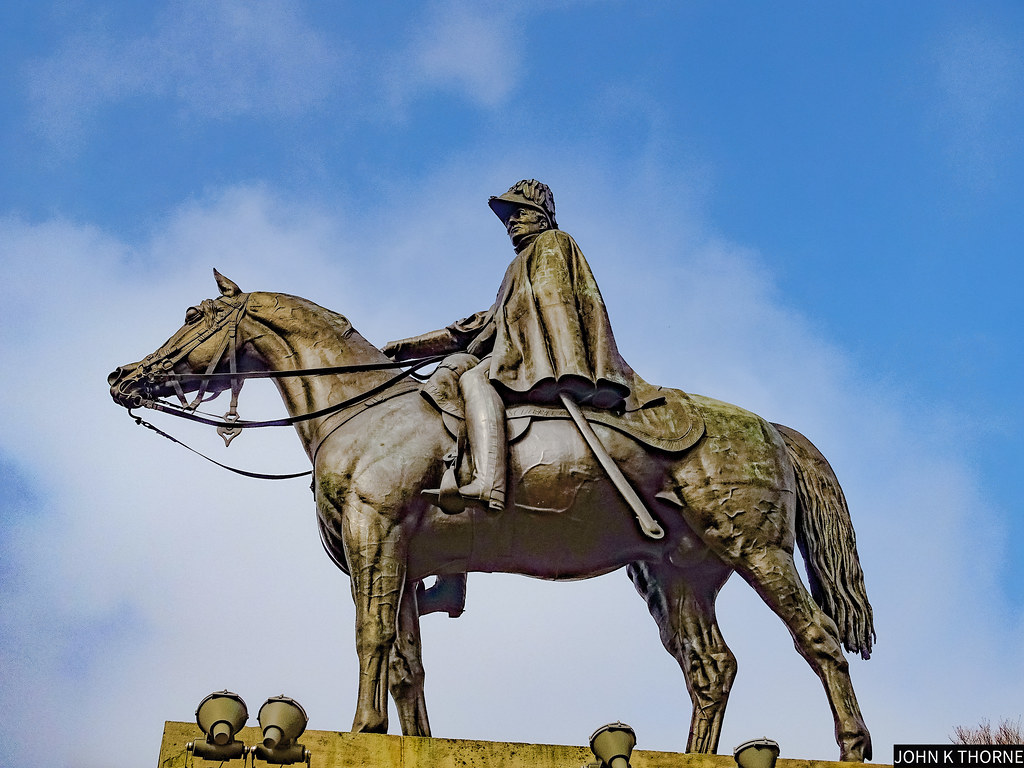
Copenhagen, a bay stallion of Arabian and thoroughbred lineage, carried the Duke of Wellington throughout the pivotal Battle of Waterloo in 1815 that ended Napoleon’s rule. Named after the 1807 British victory at Copenhagen, this legendary horse carried Wellington for an astonishing 17 consecutive hours during the battle without rest. After Waterloo, Wellington famously remarked about Copenhagen’s endurance, saying “There may have been many faster horses, no doubt many handsomer, but for bottom and endurance I never saw his fellow.” After his military service, Copenhagen lived a comfortable retirement at Wellington’s estate, Stratfield Saye, where he became known for his spirited temperament, once nearly kicking the Duke himself. When he died in 1836 at age 28, he received a funeral with full military honors – a rare distinction for a horse.
Traveller: Robert E. Lee’s Faithful Confederate Steed
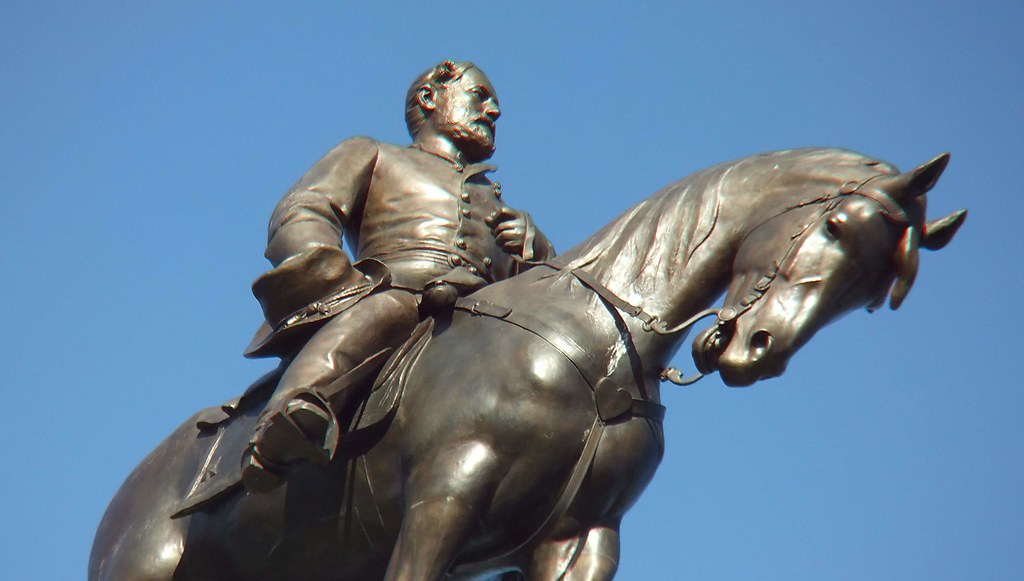
During the American Civil War, Confederate General Robert E. Lee rode a grey American Saddlebred named Traveller, who became almost as recognizable as his master throughout the Southern states. Lee purchased the horse, originally named “Jeff Davis,” in 1861 for $200 (equivalent to about $6,000 today) after noticing his strength and endurance during the Western Virginia Campaign. Traveller carried Lee through nearly every major battle of the Civil War, including Gettysburg and Appomattox, and was known for his calm demeanor under fire despite his spirited nature in camp. The bond between Lee and Traveller continued after the war, with the horse accompanying Lee to his position as president of Washington College (now Washington and Lee University). When Lee died in 1870, Traveller walked riderless in his funeral procession, and upon his own death from tetanus a year later, the horse was initially buried on the college grounds before being reinterred near Lee’s chapel.
Babieca: El Cid’s White Charger
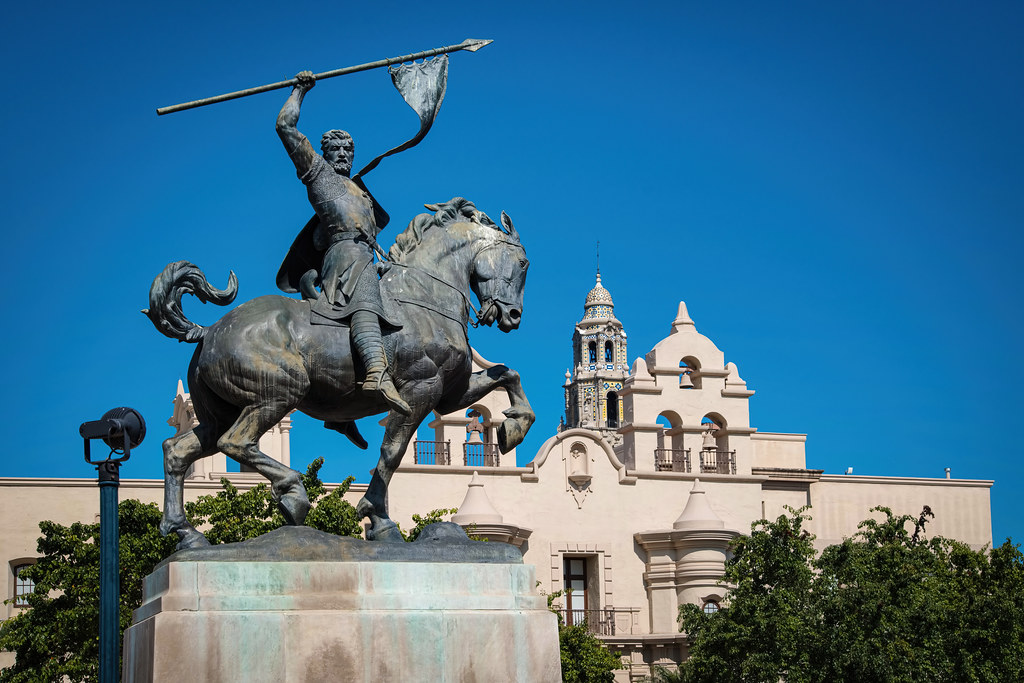
The legendary Spanish military leader Rodrigo Díaz de Vivar, known as El Cid, rode a white stallion named Babieca who features prominently in the medieval epic poem “El Cantar de Mio Cid.” According to Spanish legend, Babieca was a gift to the young Rodrigo from his godfather, who initially considered the horse to be of poor quality (the name “Babieca” reportedly means “stupid”). However, the horse proved to be an exceptional war mount, carrying El Cid through countless battles against the Moors during the Spanish Reconquista in the 11th century. The most extraordinary tale of Babieca comes after El Cid’s death in 1099 during the siege of Valencia – his body was allegedly strapped to Babieca’s saddle to lead his troops into battle one final time, terrifying enemy forces who believed El Cid had risen from the dead. When Babieca died at the remarkable age of 40, he was given a proper burial, with some accounts claiming he was laid to rest outside the gates of Valencia.
Incitatus: Caligula’s Horse and Would-Be Consul
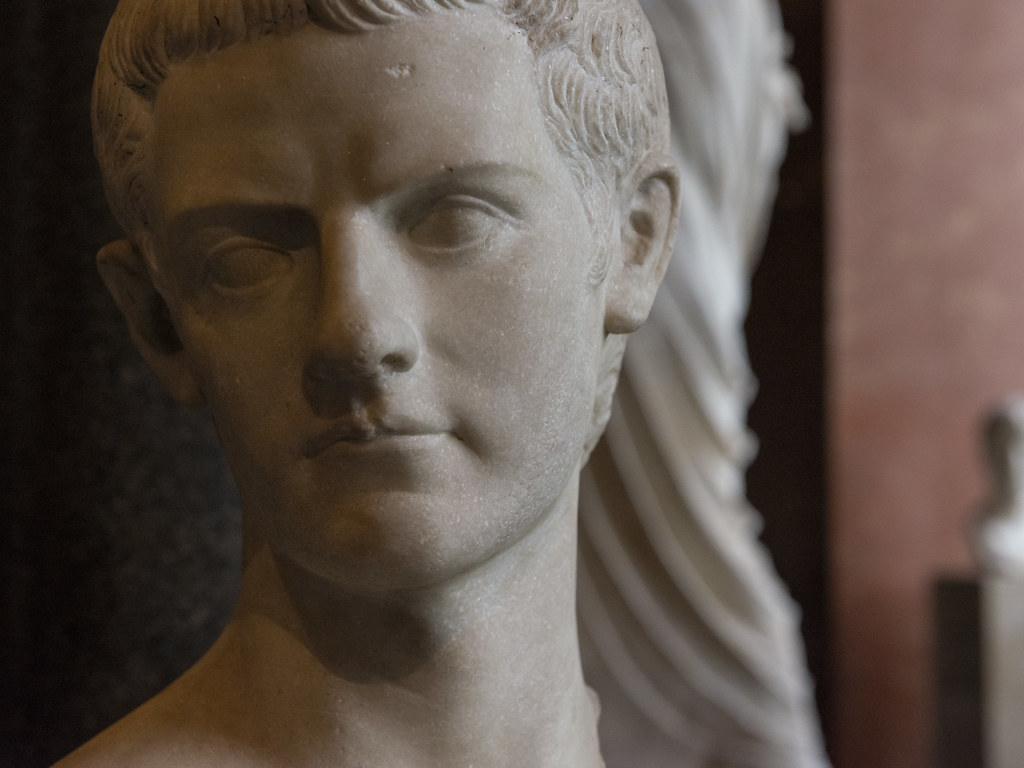
Perhaps the most controversial war horse in history, Incitatus belonged to Roman Emperor Caligula and symbolizes the extravagance that ultimately contributed to the emperor’s downfall. While not technically a battle-tested war horse, Incitatus deserves mention for his extraordinary place in history as the horse Caligula allegedly attempted to appoint as a consul of Rome. According to historians Suetonius and Dio Cassius, Caligula lavished unprecedented luxury upon Incitatus, housing him in a marble stable with an ivory manger, dressing him in purple blankets with jeweled collars, and even assigning him a household staff. Modern historians debate whether Caligula actually attempted to make Incitatus a consul, with some suggesting this was either propaganda to malign the emperor after his assassination or possibly Caligula’s elaborate mockery of the Senate. Regardless of the truth, Incitatus remains one of history’s most famous horses as a symbol of imperial excess and madness.
Kanthaka: Prince Siddhartha’s Noble White Horse
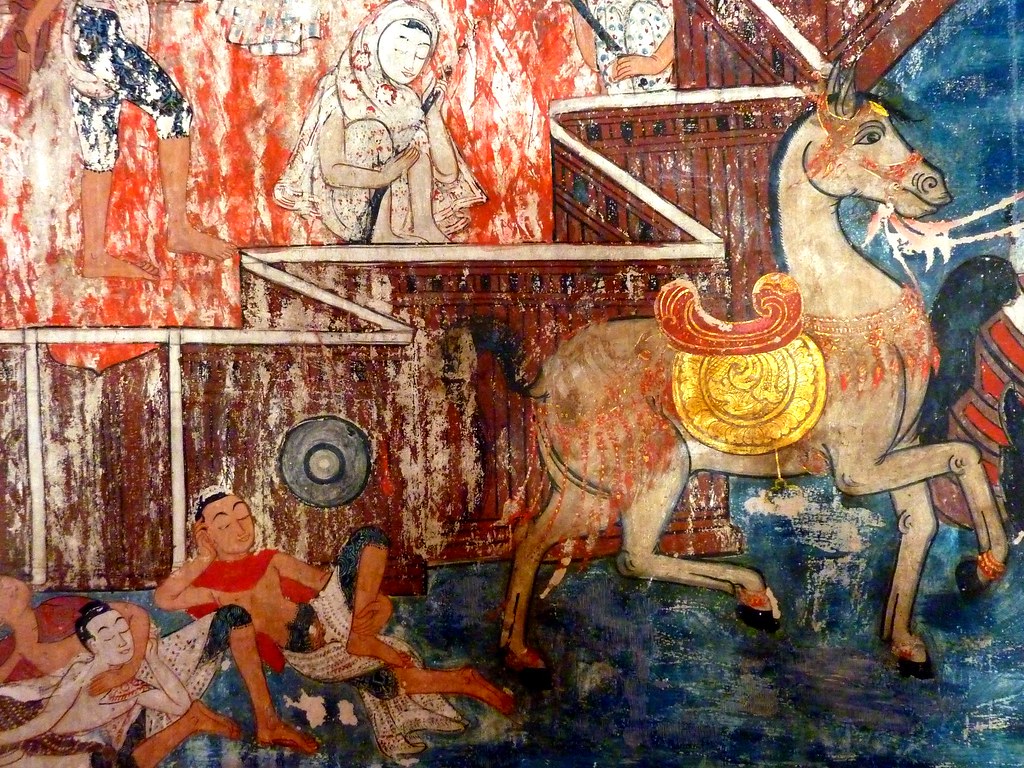
Before Siddhartha Gautama became the Buddha, he rode a magnificent white horse named Kanthaka who features prominently in Buddhist texts recounting the life of the spiritual leader. According to Buddhist tradition, Kanthaka carried Prince Siddhartha during his “Great Departure” from his father’s palace, where he had lived in luxury, to begin his spiritual journey. The horse is said to have understood the significance of his master’s quest and carried him silently at night, his hooves supposedly muffled by the gods so as not to wake the palace guards. Legend tells that Kanthaka carried Siddhartha approximately 30 miles from the palace before the prince dismounted, removed his royal garments, and cut his hair to begin his life as an ascetic. Unable to bear the separation from his master, Kanthaka is said to have died of a broken heart shortly afterward but was reborn in Tāvatiṃsa heaven as a reward for his role in Buddha’s spiritual journey.
Cincinnati: Ulysses S. Grant’s Favorite Mount
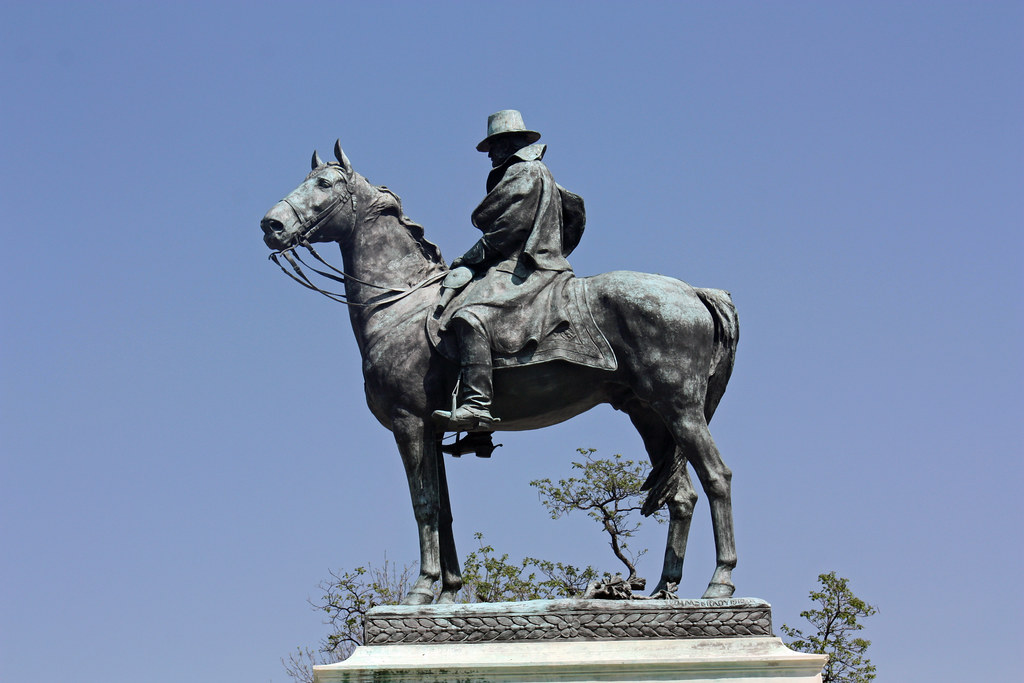
Among General and President Ulysses S. Grant’s many horses during the American Civil War, Cincinnati stood out as his most prized mount and one of the finest horses in the Union Army. Standing an impressive 17 hands high (about 68 inches), this magnificent thoroughbred was gifted to Grant in 1864 by an admirer who claimed the horse was a son of the famous racehorse Lexington. Grant rode Cincinnati during the Confederate surrender at Appomattox Court House in 1865, an event that marked the effective end of the Civil War. Grant was famously protective of his favorite horse, rarely allowing anyone else to ride him – with the notable exception of President Abraham Lincoln, whom Grant considered the only other person worthy of mounting the noble animal. Cincinnati accompanied Grant to the White House during his presidency and remained with him until the horse’s death, with Grant once remarking that Cincinnati was “the finest horse that I have ever seen.”
Comanche: The Only Survivor of Custer’s Last Stand
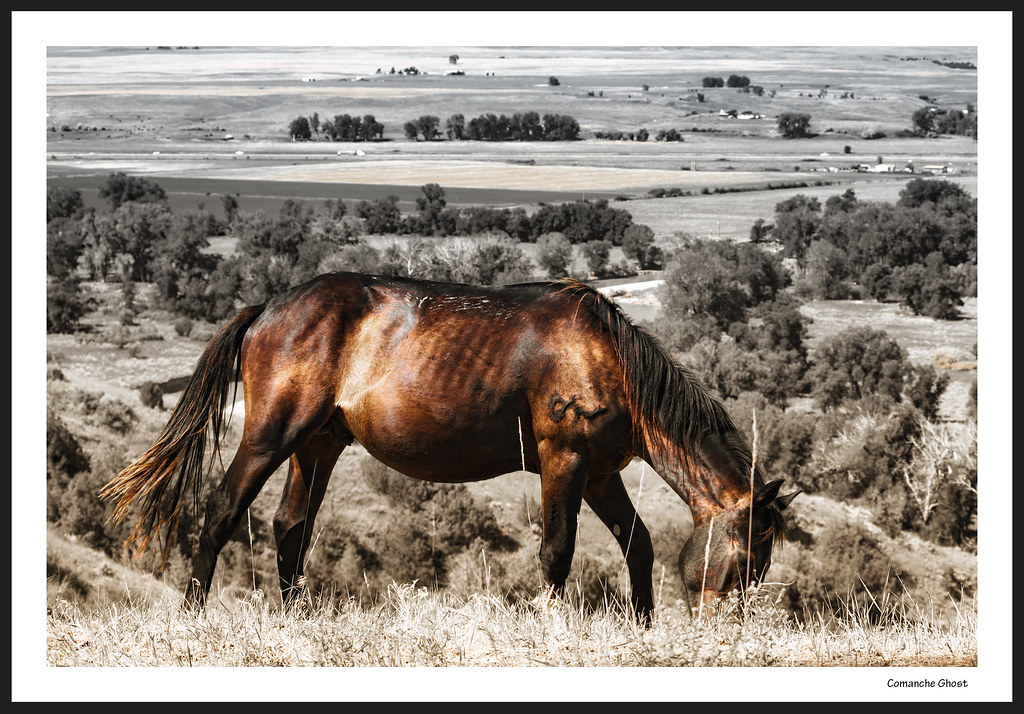
Comanche, a mustang gelding with mixed Morgan bloodlines, achieved fame as the only living creature found at the Battle of Little Bighorn in 1876, where Lieutenant Colonel George Armstrong Custer and his entire detachment were killed by Lakota, Northern Cheyenne, and Arapaho warriors. Though Comanche was not actually Custer’s mount—he was ridden by Captain Myles Keogh of the 7th Cavalry—he became a lasting symbol of the devastating defeat. Discovered badly wounded with at least seven bullet wounds two days after the battle, Comanche was carefully transported to Fort Lincoln, where he spent over a year recovering under the dedicated care of the regiment’s veterinarian. After his recovery, the horse was officially designated a “second commanding officer” of the 7th Cavalry and was never ridden again, instead participating in parades and ceremonies as a living symbol of resilience. Upon his death in 1891 at approximately 29 years of age, Comanche received the rare honor of a military funeral with full honors. His remains were later preserved and are now displayed at the University of Kansas Natural History Museum.
Vizir: The Last Survivor of Napoleon’s Horses

While Marengo might be Napoleon’s most famous war horse, another of his steeds named Vizir holds the distinction of being the only one of Napoleon’s horses whose complete stuffed remains are preserved and displayed today. This Arabian grey, captured in Egypt during Napoleon’s campaign there, served the French emperor from 1802 to 1815, including during the disastrous Russian campaign of 1812. Unlike Marengo, who was captured at Waterloo, Vizir accompanied Napoleon into exile on the island of Saint Helena, showing the deep attachment the emperor had to this particular mount. After Napoleon’s death in 1821, Vizir was brought back to France, where he lived until his death in 1826 at approximately 33 years of age. The horse was subsequently stuffed and preserved, and today his mounted remains can be viewed at the Army Museum in Paris, complete with his original bridle, giving visitors a rare opportunity to see the actual appearance of a historic war horse that carried one of history’s most famous military leaders.
Tencendur: Charlemagne’s Powerful Medieval Warhorse
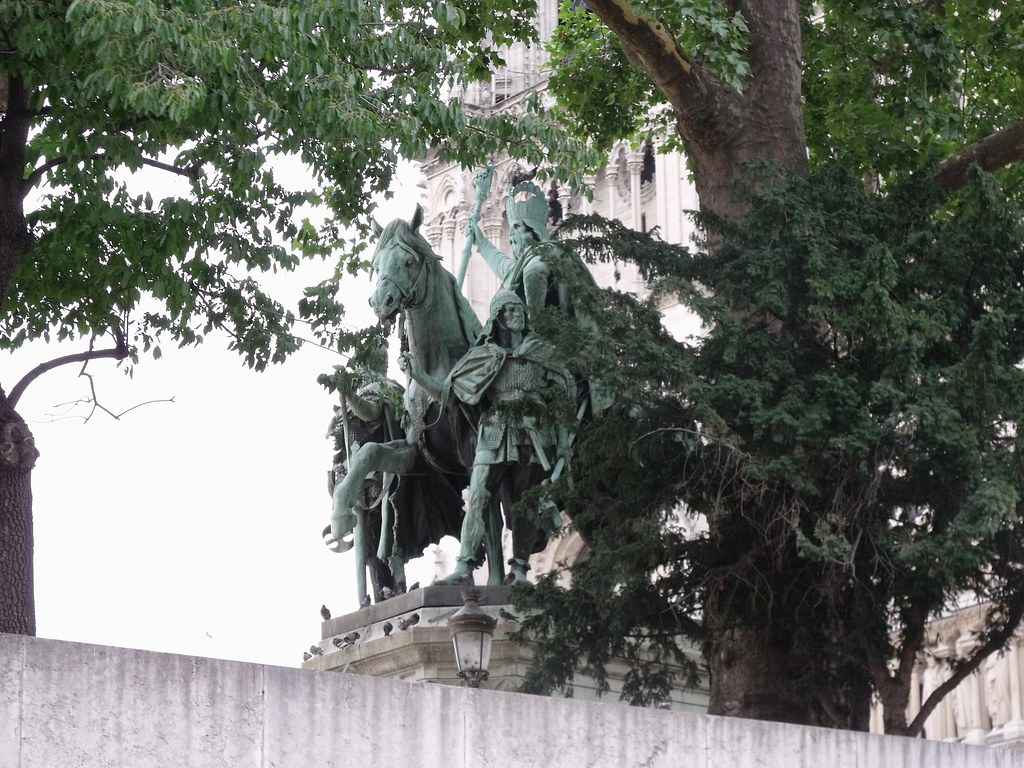
In medieval literature and legend, particularly in the French epic poem “The Song of Roland,” Charlemagne, the first Holy Roman Emperor, rides a mighty steed named Tencendur. While historical records about the actual horse are limited, the legendary Tencendur is described as a massive, powerful destrier – the heaviest type of medieval war horse bred specifically for strength to carry armored knights into battle. According to the epic, Tencendur was captured from the Saracen king Malpalin of Narbonne, suggesting the horse may have been of Spanish or Arabian stock, which were highly prized in medieval Europe. In the poem, Tencendur is swifter than any falcon or swallow, highlighting the medieval appreciation for both strength and speed in war horses. While we cannot verify Tencendur’s historical existence with certainty, the prominence of this horse in medieval literature reflects the cultural importance of the war horse in European chivalric tradition and the close bond believed to exist between legendary kings and their equally legendary mounts.
Palomo: Simón Bolívar’s White Liberator
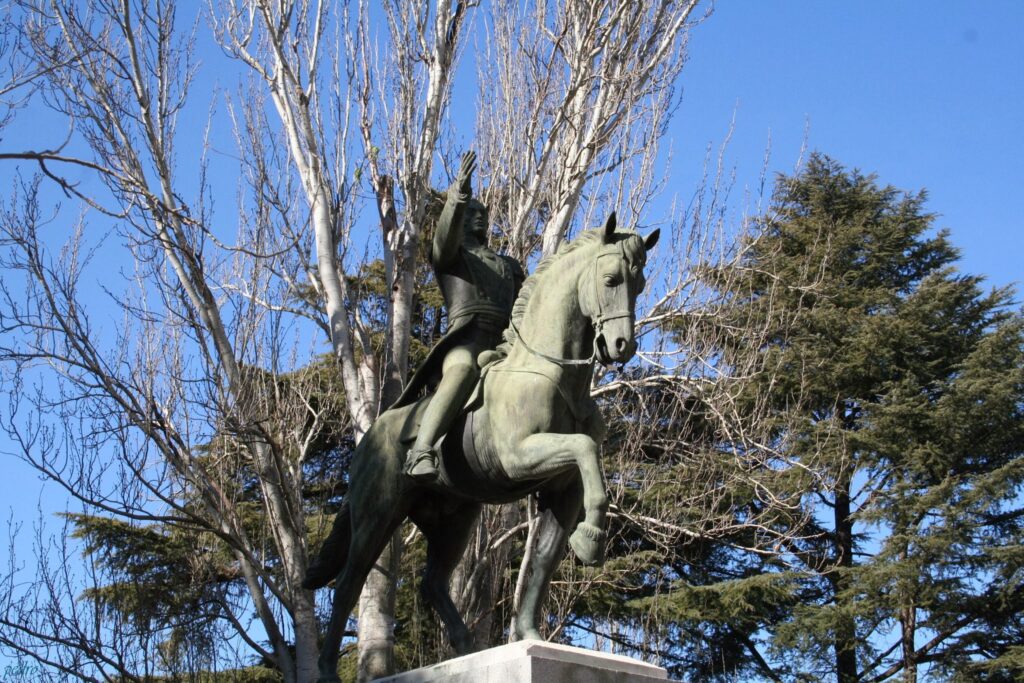
The South American revolutionary leader Simón Bolívar, known as “El Libertador” for his crucial role in leading several countries to independence from Spanish rule, rode a magnificent white Andalusian stallion named Palomo throughout many of his military campaigns. Palomo carried Bolívar across thousands of miles of difficult terrain, including the treacherous crossing of the Andes Mountains during the Admirable Campaign of 1813, a journey that helped secure Venezuela’s independence. According to historical accounts, Bolívar was deeply attached to Palomo, who served as his primary mount for seven years during the height of the independence struggles. When Palomo died in 1819, reportedly from exhaustion after a particularly grueling campaign, Bolívar was devastated and ordered his faithful companion buried with military honors. The horse’s death was marked by a period of mourning among Bolívar’s troops, who recognized the special bond between the revolutionary leader and his trusted steed who had carried him through countless battles in the fight for South American independence.
Throughout history, these legendary war horses transcended their role as mere transportation or military assets to become genuine partners to the great leaders who rode them. Their stories reveal not just the strategic importance of horses in warfare but also the profound bonds that formed between these animals and their riders. From Bucephalus carrying Alexander to the edges of the known world to Comanche surviving the slaughter at Little Bighorn, these horses earned their place in history through courage, endurance, and loyalty.
The legacy of these magnificent animals continues to captivate our imagination today, reminding us that behind many of history’s pivotal moments stood not just great men, but also the extraordinary horses that carried them. As warfare evolved and mechanization eventually replaced cavalry, these legendary war horses became the last of their kind – symbols of an era when the fates of nations could depend on the strength, speed, and heart of these remarkable animals.

